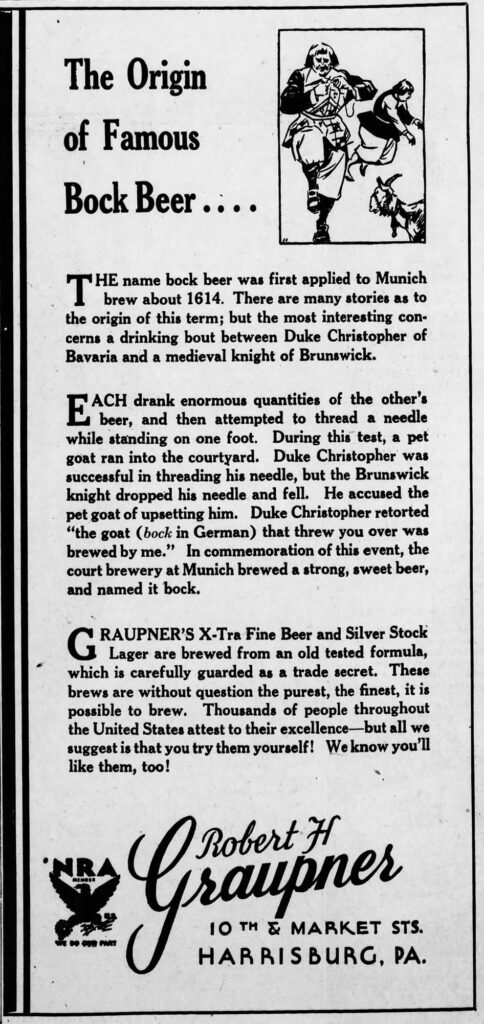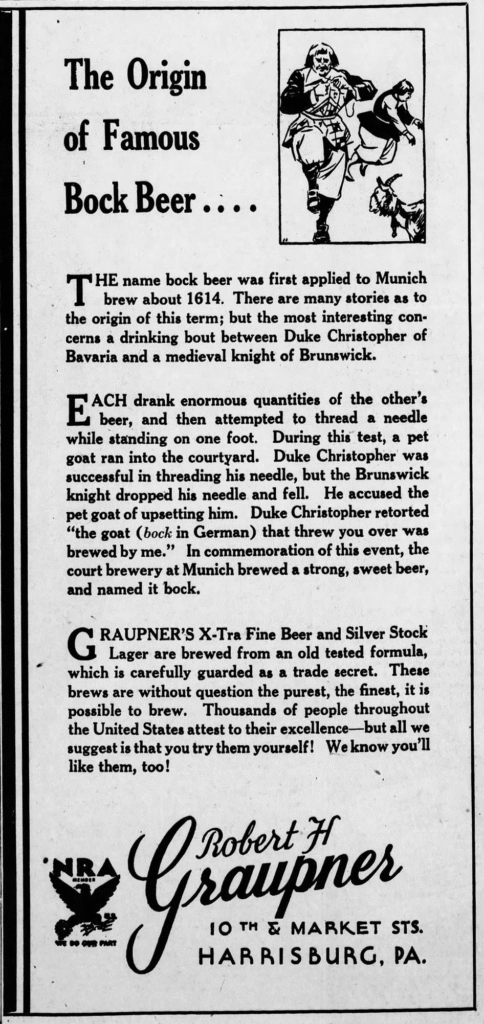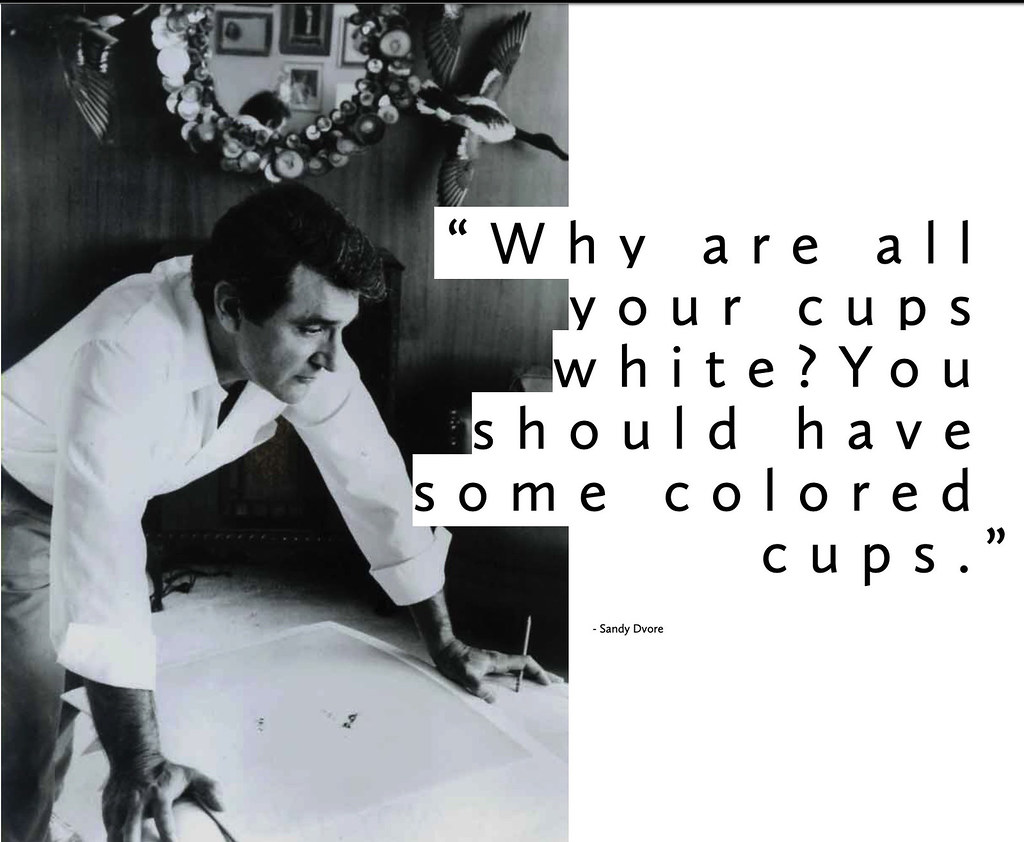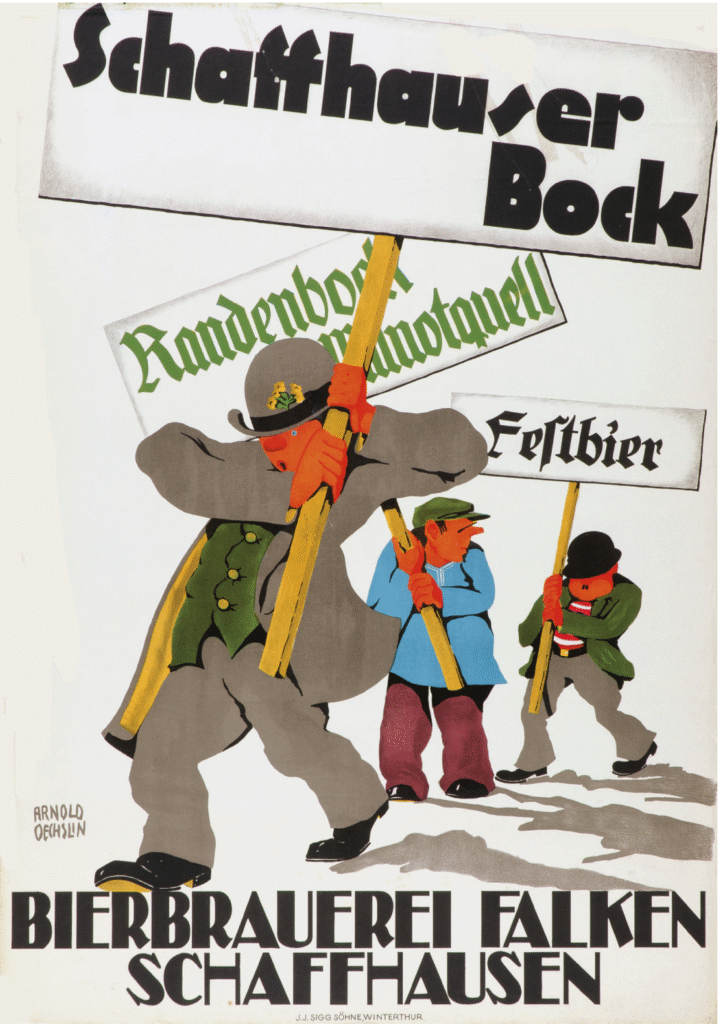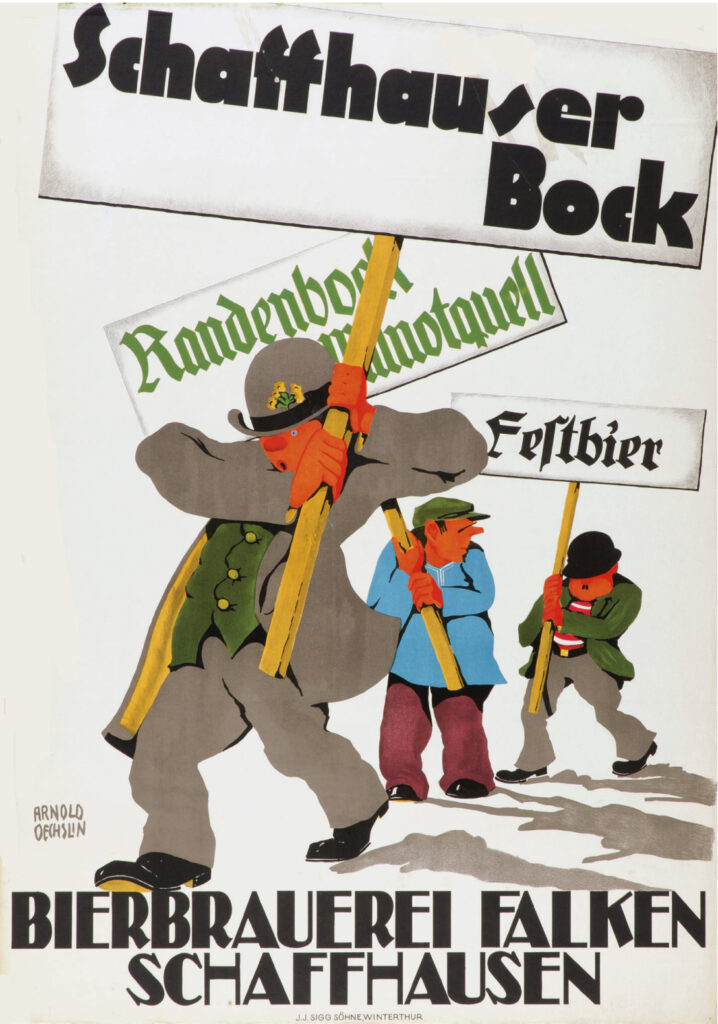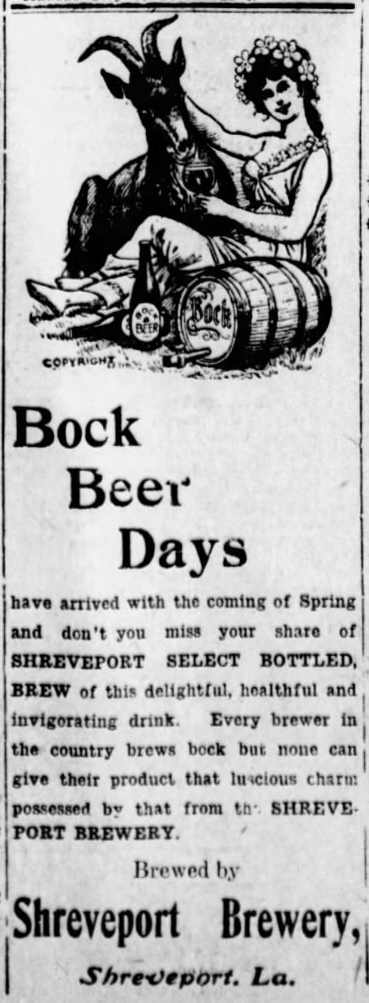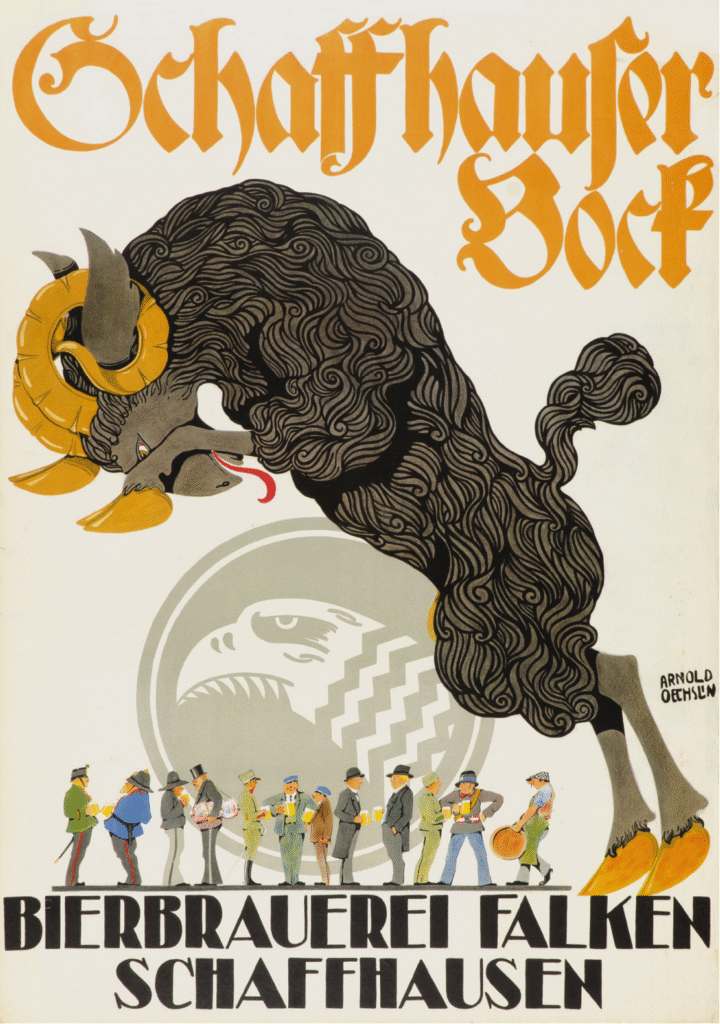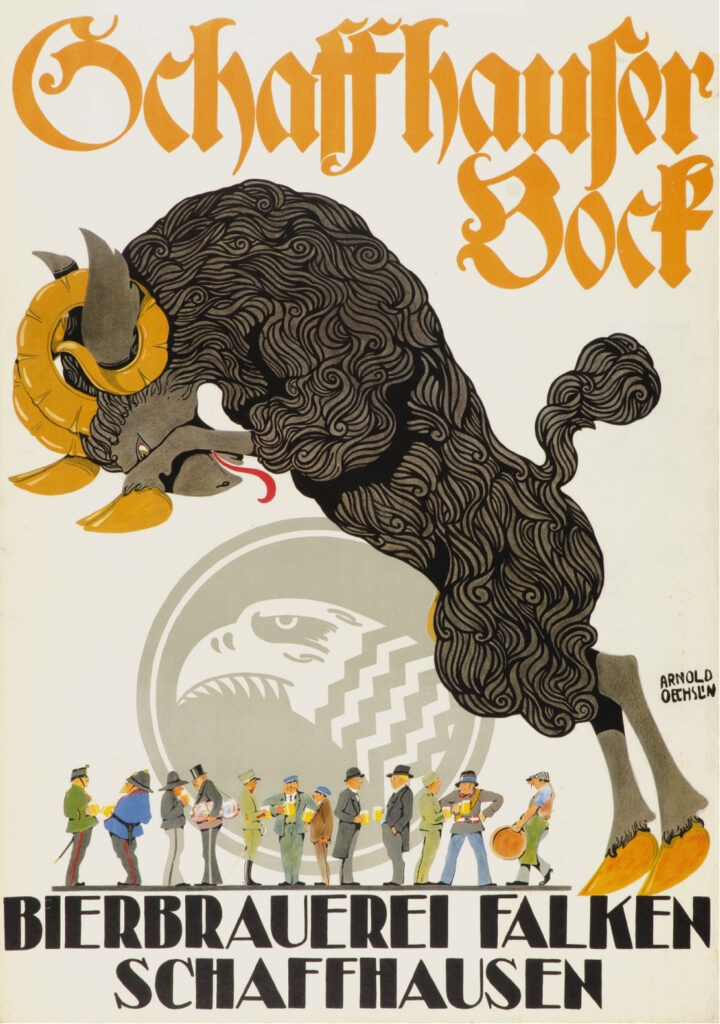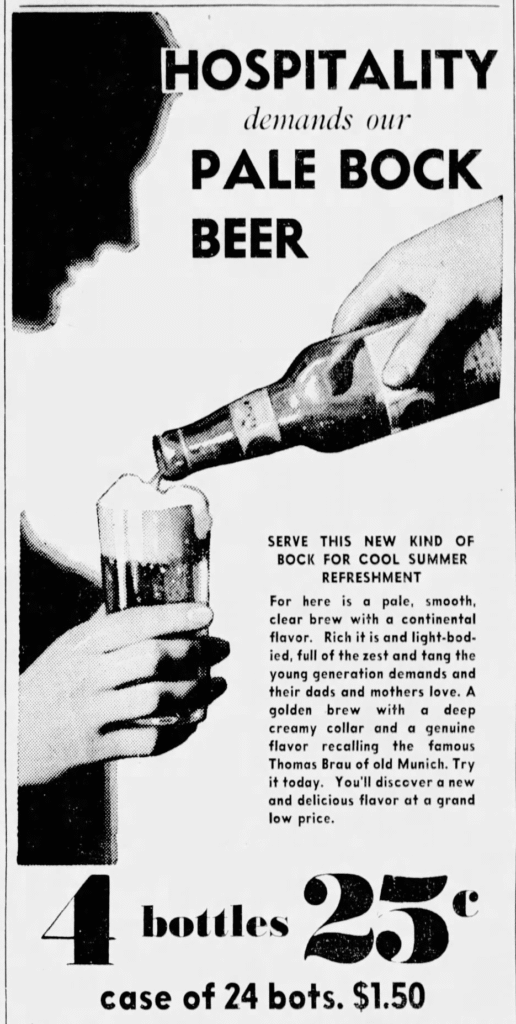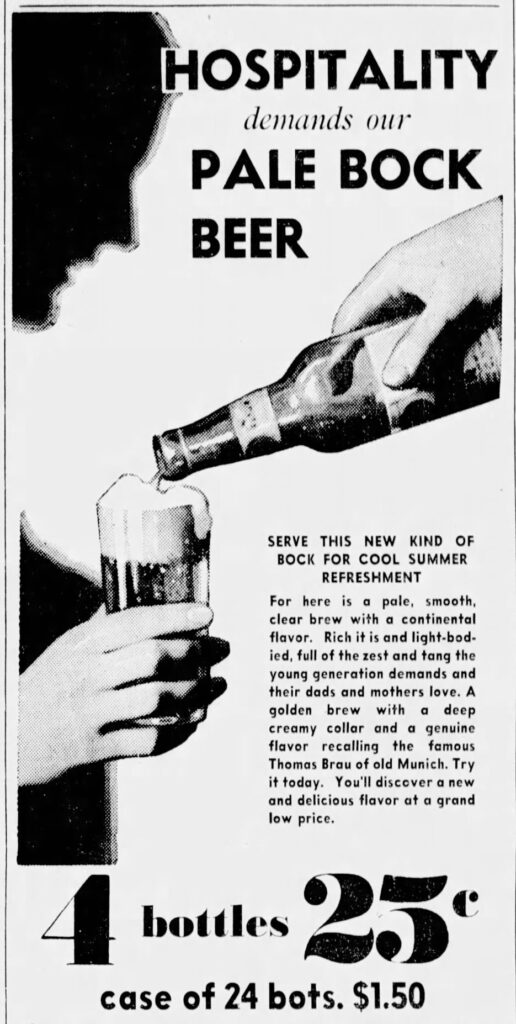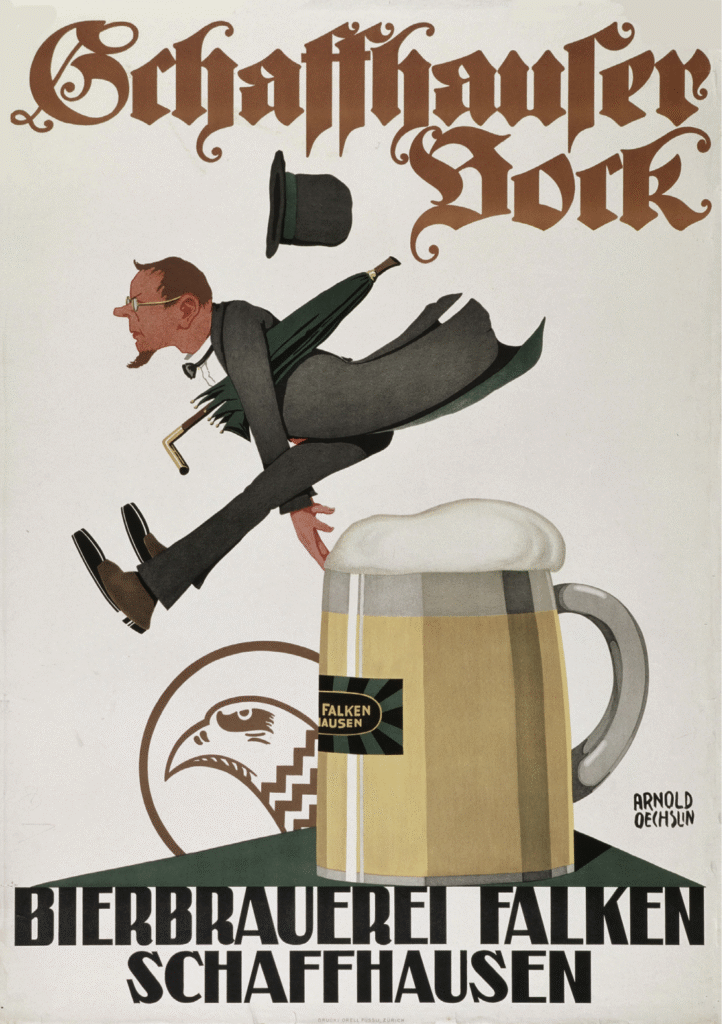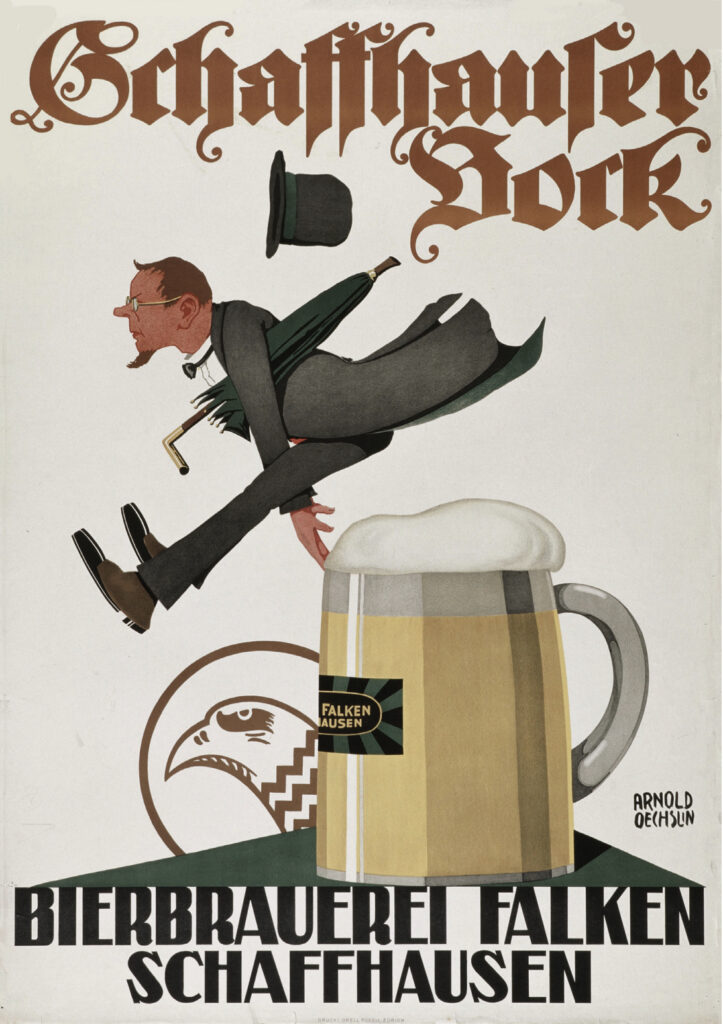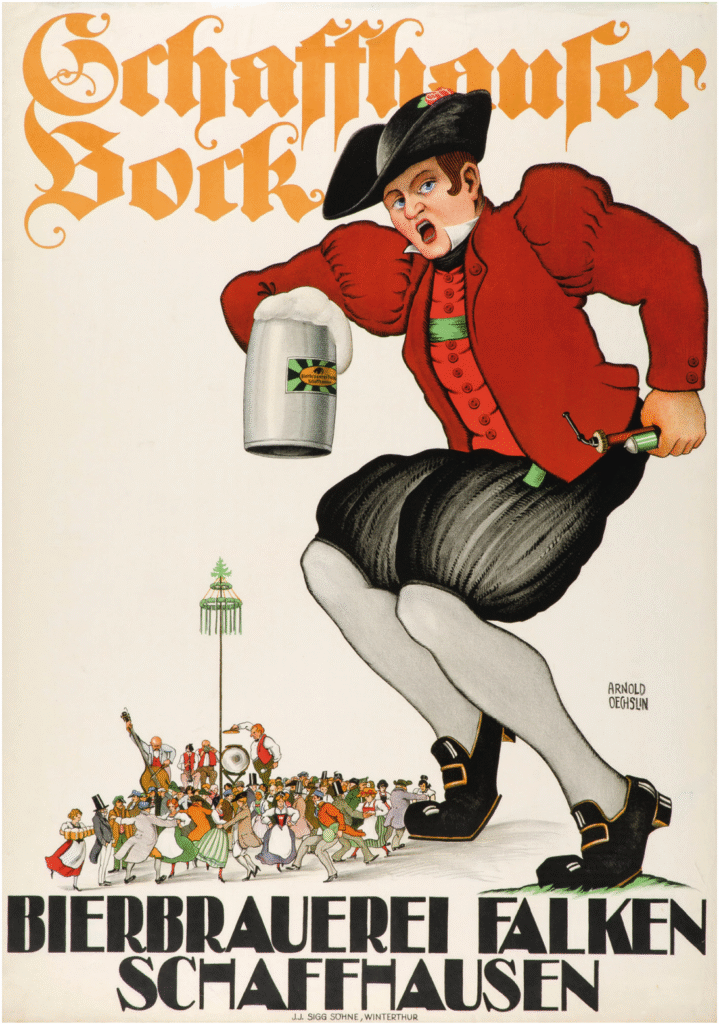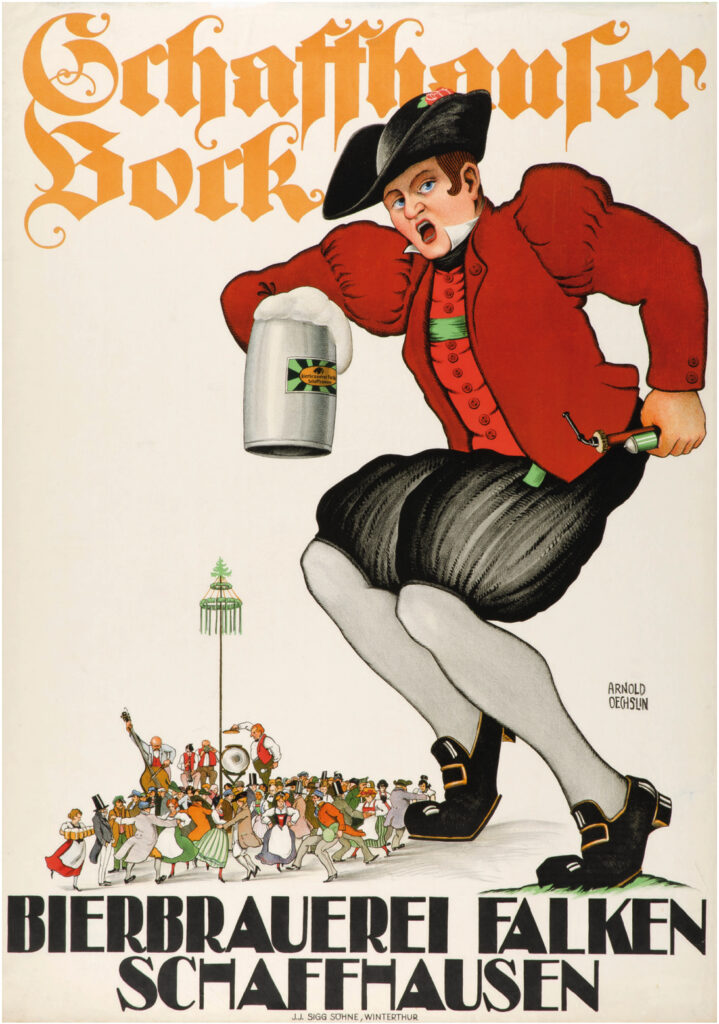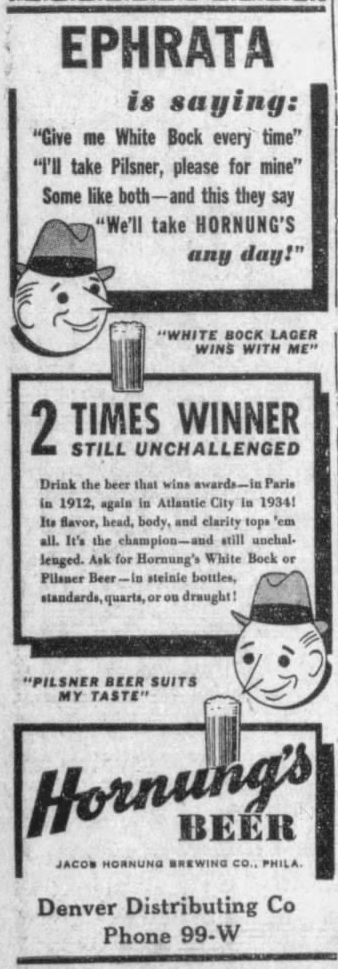
Last year I decided to concentrate on Bock ads. Bock, of course, may have originated in Germany, in the town of Einbeck. Because many 19th century American breweries were founded by German immigrants, they offered a bock at certain times of the year, be it Spring, Easter, Lent, Christmas, or what have you. In a sense they were some of the first seasonal beers. “The style was later adopted in Bavaria by Munich brewers in the 17th century. Due to their Bavarian accent, citizens of Munich pronounced ‘Einbeck’ as ‘ein Bock’ (a billy goat), and thus the beer became known as ‘Bock.’ A goat often appears on bottle labels.” And presumably because they were special releases, many breweries went all out promoting them with beautiful artwork on posters and other advertising.
Thursday’s ad is for Graupner Bock Beer, which was published on August 28, 1933. This one was for the Robert H. Graupner Brewery of Harrisburg, Pennsylvania, which was originally founded in 1875 as Koenig & Bro. and was also often called the Centennial Brewery, though Graupner was usually in the name after 1893. They also mention two of the other beers, Graupner’s X-Tra Fine Beer and Silver Stock Lager. But what’s most curious about the ad is that most of it is taken up by the telling of one of the many origin stories of bock beer. This ad ran in The Harrisburg Telegraph, also of Harrisburg, Pennsylvania.
